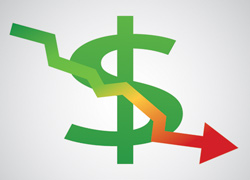 Based on the demand for safe haven assets, the Chinese lunar new year approaching and the ongoing cash ban turmoil in India, Gold has so far risen by circa 4% in 2017. Gold initially rallied to a seven week high on Thursday, as investors also rotated back into gold backed funds. The dollar declined (in correlation with Gold rising) due to Donald Trump’s press conference being extremely light on content, particularly information concerning the supposed fiscal stimulus. Gold settled the day towards $1,195, after rising above the key $1,200 an ounce level for the first time since late November. Gold futures reached $1,207.20 at one stage, the highest for a most active contract since Nov. 23rd.
Based on the demand for safe haven assets, the Chinese lunar new year approaching and the ongoing cash ban turmoil in India, Gold has so far risen by circa 4% in 2017. Gold initially rallied to a seven week high on Thursday, as investors also rotated back into gold backed funds. The dollar declined (in correlation with Gold rising) due to Donald Trump’s press conference being extremely light on content, particularly information concerning the supposed fiscal stimulus. Gold settled the day towards $1,195, after rising above the key $1,200 an ounce level for the first time since late November. Gold futures reached $1,207.20 at one stage, the highest for a most active contract since Nov. 23rd.
Pacific Investment Management Co. describes itself as “an investment management firm providing solutions for institutions, financial professionals and millions of individuals worldwide”. It has approx. $1.5 trillion under management and is now owned by Allianz. It is one of the most active funds in currencies, therefore it’s opinion carries significant weight. According to an analyst at PIMCO, they’re betting that UK’s sterling may have further to fall as a consequence of Brexit. They cite political uncertainty as the outlier were any form of market analysis is concerned. They also point out that the UK’s current account deficit is one of the worst in the developed world. The U.K. had a current account deficit of $31.3 billion in the third quarter of 2016, according to official data.
HSBC has gone on record as forecasting sterling dropping to $1.10 if the hard Brexit exit option is taken up. Sterling lost 16% against the dollar and 14% versus the euro last year, the most since 2008. Earlier this week sterling fell close to the thirty two year low recorded in October, to as low as $1.2039, due to concerns that the U.K. is headed for the hard Brexit option; gaining control of immigration at the expense of having to quit Europe’s single market. The UK government’s March deadline, for triggering Article 50 and leaving the union, is beginning to concentrate minds.
European markets endured a sell off on Thursday, with the exception of the UK’s FTSE, which once again posted a record high at 7,293. France’s CAC closed down 0.51%, Germany’s DAX down 1.07% and Italy’s MIB down a significant 1.69%, as banking crisis fears returned. The SPX fell by 0.2% to 2,270.40 in New York, after falling in the trading session by as much as 0.9%. The DJIA closed down 0.32% at 19,891, recovering from sinking below 19,750.
Oil futures rose 1.5% to settle at circa $52.76 a barrel in New York, after Saudi Arabia said it cut production more than required by the OPEC deal, the Saudis claim they cut production to less than 10 million barrels a day. U.S. natural gas rose by 2.2% per therm to $3.367, as a survey showed inventories probably fell by 141 billion cubic feet last week, whilst a cold snap in the USA approaches.
Gold rose above $1,200 an ounce for the first time since November as the dollar fell. Silver futures (for March delivery) were little changed at $16.825 an ounce. The Dollar Spot Index, the measure of the dollar versus its 10 major peers, fell by 0.5%, recovering from a fall that (at one stage) exceeded 1%.
GBP/USD rose earlier on Thursday, the dollar was initially weakened by the lack of detail in President elect Donald Trump’s spending plan, delivered in his press conference on Wednesday. Sterling had risen by 0.4% to $1.2267 as of 2:50 p.m. in London. However, after news of the UK’s prime minister May’s Brexit speech scheduled for Friday, sterling slid back versus its major peers to trade at $1.2153, significantly lower on the day, but still ahead of Wednesday’s low of $1.2038. EUR/USD rose by circa 0.4% to $1.0622. EUR/GDP rose by 0.9%, to its highest level in almost two weeks, at 87.34. USD/JPY fell, dropping by 0.8%.
Economic calendar events for Friday 13th January 2016, all times quoted are London times.
13:30, currency effected USD. Advance Retail Sales (DEC). The anticipation is that the advance retail sales metric will have risen by 0.7% from 0.1% previously. Naturally, seasonal sales will be partly responsible for the improvement. At 13:30 there’s a raft of information published regarding the USA’s retail figures, traders would be advised to monitor it all carefully.
15:00, currency effected USD. U. of Michigan Confidence (JAN). The university of Michigan confidence survey is observed keenly by: economists, analysts and traders alike, given that it’s one of the most respected and valued surveys. Despite it being a smaller survey, compared to the conference board survey, it does have the power to move markets if the number printed is some distance away from the previous print, or from the anticipated figure. The prediction is a rise to 98.5, from 98.2.


